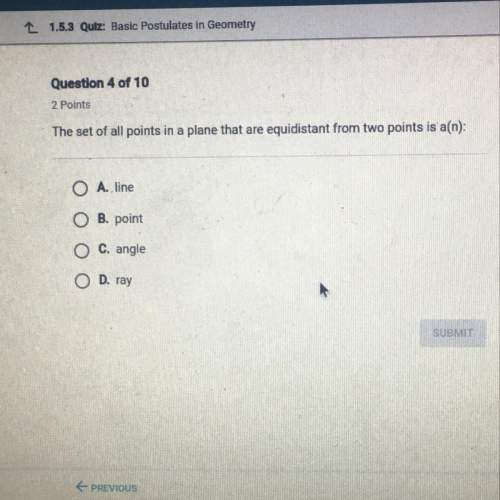
Mathematics, 21.12.2020 22:40 keagank
The following is a distribution of scores on a quiz: 86 98 90 96 95 98 100 78 Using the SPSS output below, calculate and interpret the interquartile range. What is the most appropriate measure of central tendency for this variable? HOURSLOST is the annual number of hours people lost due to traffic congestion in a sample of 22 cities. FREQUENCIES VARIABLES=HOURSLOST/NTILES=4/STATIS TICS=STDDEV VARIANCE MEAN MEDIAN/ORDER=ANALYSIS. HOURSLOSTNValid22Missing0Mean26.545 5Median26.0000Std. Deviation8.80869Variance77.593Perce ntiles2522.25005026.00007532.2500 PercentCumulative PercentValid11.0014.54.54.513.0014. 54.59.114.0014.54.513.619.0014.54.5 18.220.0014.54.522.723.00418.218.24 0.924.0014.54.545.526.0029.19.154.5 27.0029.19.163.628.0014.54.568.230. 0014.54.572.732.0014.54.577.333.001 4.54.581.837.0014.54.586.440.0014.5 4.590.941.0014.54.595.544.0014.54.5 100.0Total22100.0100.0

Answers: 1
Another question on Mathematics

Mathematics, 21.06.2019 16:00
Which speed is the fastest (use 1 mile ≈ 1.6 kilometers)? a. 12 miles/hour b. 18 feet/second c. 19 kilometers/hour d. cannot be determined
Answers: 1

Mathematics, 21.06.2019 19:00
What is the best way to answer questions with a x expression in the question. for example 3x + 10x=?
Answers: 1

Mathematics, 21.06.2019 21:30
In a test for esp (extrasensory perception), the experimenter looks at cards that are hidden from the subject. each card contains either a star, a circle, a wave, a cross or a square.(five shapes) as the experimenter looks at each of 20 cards in turn, the subject names the shape on the card. when the esp study described above discovers a subject whose performance appears to be better than guessing, the study continues at greater length. the experimenter looks at many cards bearing one of five shapes (star, square, circle, wave, and cross) in an order determined by random numbers. the subject cannot see the experimenter as he looks at each card in turn, in order to avoid any possible nonverbal clues. the answers of a subject who does not have esp should be independent observations, each with probability 1/5 of success. we record 1000 attempts. which of the following assumptions must be met in order to solve this problem? it's reasonable to assume normality 0.8(1000), 0.2(1000)%30 approximately normal 0.8(1000), 0.2(1000)% 10 approximately normal srs it is reasonable to assume the total number of cards is over 10,000 it is reasonable to assume the total number of cards is over 1000
Answers: 1

You know the right answer?
The following is a distribution of scores on a quiz: 86 98 90 96 95 98 100 78 Using the SPSS output...
Questions























